You probably landed on this page because you wish to know how to sign out of iCloud on your Mac device, or log out, or as basic as how to turn the machine off, or all of the above. Whatever be your ail, this guide serves all.
If you are here to turn off your Mac device properly, it is definitely worth knowing why you should do it. Many people tend to get habituated to NOT turning off their Macbooks or maybe don’t care enough to do so, since they are always one of the best computers of their time it doesn’t impact their performance right away.
However, not turning off your Macbook might save you a few seconds of boot-up time, it might cost you the longevity and health of the internals of your machine.
Turn Off your Mac Manually
Turning off your mac is no rocket science and is a very straightforward process. Though macOS does provide a way to turn off your Mac automatically, knowing how to do it manually can be rewarding in many scenarios.
To shut down your Mac, click on the Apple icon present on the top right corner of your screen. Then, click on the ‘Shut down’ option present in the menu. This will bring up a prompt on your screen.
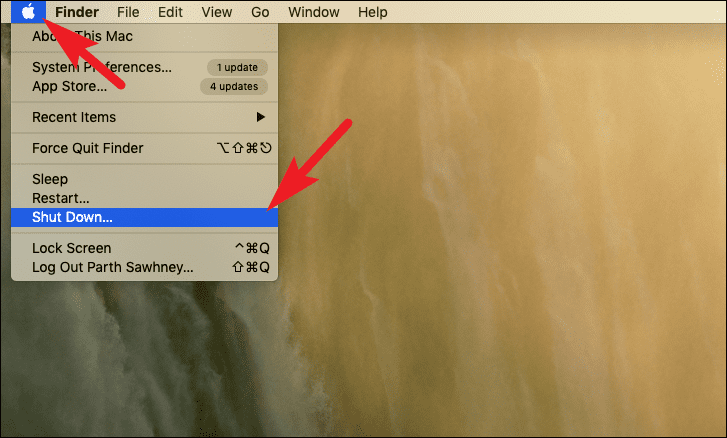
Now, if you wish to reopen the currently active windows when you log back in click on the checkbox preceding the option ‘Reopen windows when logging back in’ and then click on the ‘Shutdown’ button to commence the shutting down process.
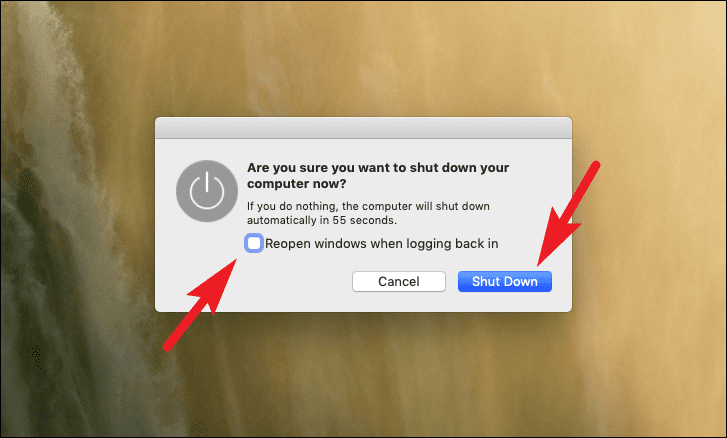
Alternatively, you can also press the Control+Option+Command+Power Button shortcut to quit all windows and shut down your mac immediately.
Add a Schedule to Turn off your Mac Automatically
If you usually shut down your Mac at around the same time every day, you can also set a specific schedule to turn itself off automatically without your intervention.
To add a schedule, open the ‘System Preferences’ app from the dock or from the launchpad of your device.

Now, locate and click on the ‘Energy Saver’ icon from the System Preference window.
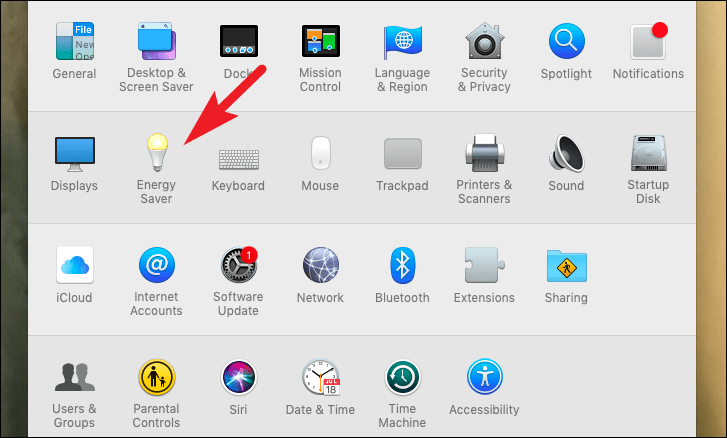
On the ‘Energy Saver’ screen, click on the ‘Schedule’ button from the bottom right corner of the window. This will open a separate pane on your screen.
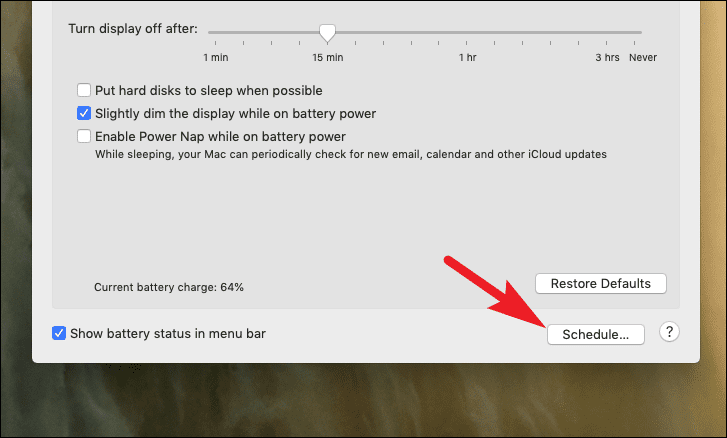
From the separately opened pane, click on the checkbox preceding the ‘Sleep’ option.
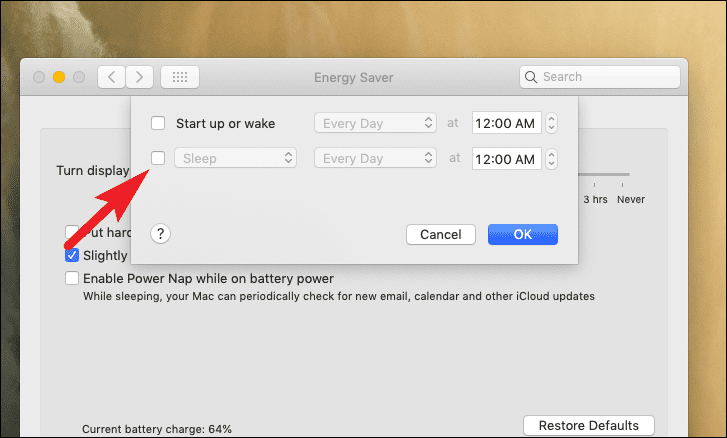
Then, click on the drop-down and select the ‘Shut down’ option. After that, click on the ‘Days’ dropdown and select the frequency as per your preference.

Now, set your preferred time to automatically shut down your computer and then click the ‘OK’ button to confirm the changes and close the window.

Your Mac will now turn off automatically as per your set schedule.
How to Sign out from the Current User Account
Logging out makes sense when you are not going to use your computer for a very short period of time and at the same time, you want to ensure no unauthorized person has access to your computer.
Moreover, logging out is only a single-step process, and since it is accessible either via a shortcut or from the top menu bar, no matter what you are doing on your Mac, logging out is just a click away.
To log out, click on the Apple icon present on the rightmost edge of the top menu bar on your screen. Then, click on the ‘Log out’ option to log out of your Mac immediately.
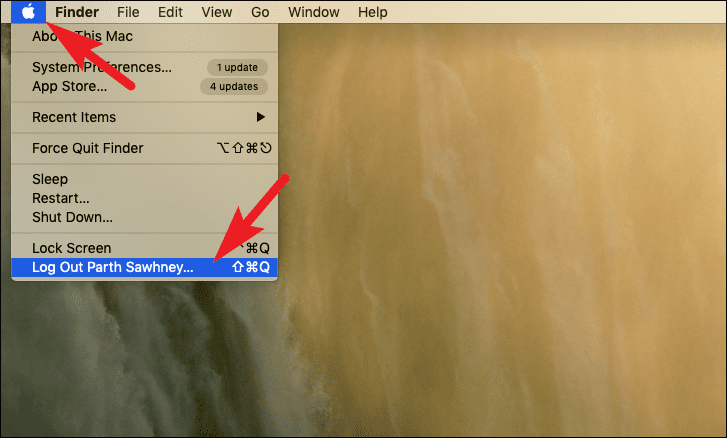
Alternatively, you can press the Shift+Command+Q to bring up the ‘Log out’ window. If you wish to reopen all currently open apps when you log back in click on the checkbox preceding the ‘reopen windows when logging back in’ and click on the ‘Log Out’ button.
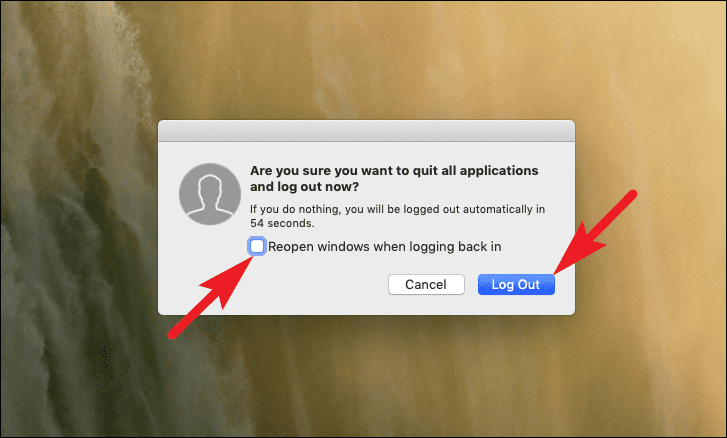
Let’s get started with iCloud now. The iCloud service plays a very integral part in all Apple devices, and the same applies to Mac devices as well. However, if you prefer not to use the iCloud service on your machine, you can definitely turn it off and sign out of all iCloud services.
Though the decision completely lies upon you to use the iCloud services or not, if you opt-out, you lose out on a major chunk of services along with it. To provide you a better perspective, below listed are the service you won’t be able to use if you sign out of iCloud on your Mac:
- Find My services
- Game Center
- iCloud (Backup, Keychain, Drive, Mail, Photos)
- Apple Pay, Apple Cash, and Apple Card
- Shared Albums, Notes, Documents (Keynote, Pages, Numbers)
- Continuity features (Handoff, Universal Clipboard)
- Home app (Helps you control your HomeKit devices)
- App data to any third-party app that uses iCloud
If you can live without all these services not enabled on your Mac device, signing out of iCloud on a Mac device is a cakewalk.
Sign out of your Apple ID on your Mac
Though there are so many components interlaced with your iCloud account and signing out is a big decision; the actual process is very simple and straightforward.
To do so, head to the ‘System Preferences’ app either from the dock or from the launchpad of your Mac.
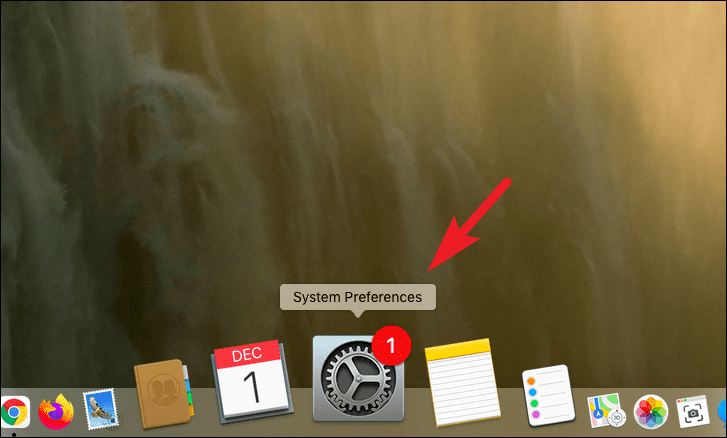
Then, click on the ‘iCloud’ icon present on the ‘System preferences’ window.
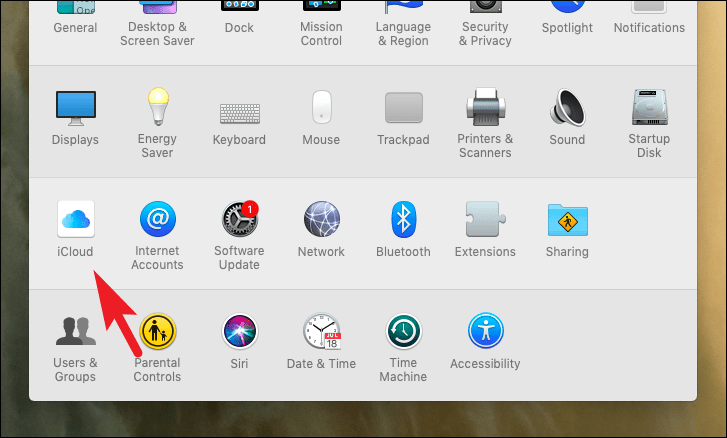
After that, click on the ‘Sign Out’ option situated on the left sidebar of the window. This will bring up a prompt on your screen.
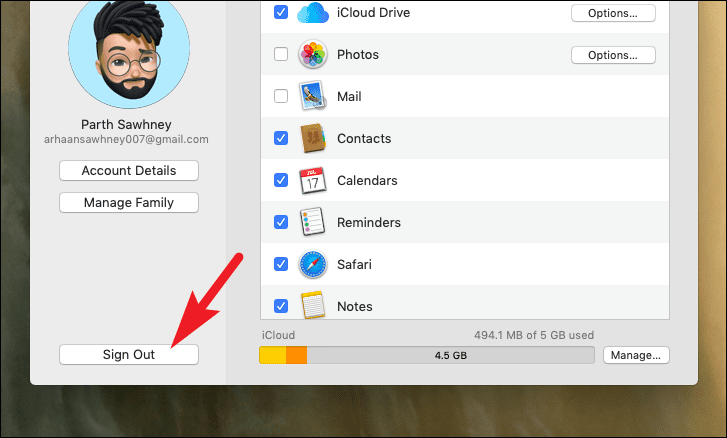
Now, read the prompt carefully and select the item you wish to keep a copy of the data stored in iCloud locally by clicking on the individual checkbox preceding the items. Finally, click on the ‘Keep a copy’ button to sign out.
Note: If you do not select any item, any and all your data stored in the iCloud will be deleted from your Mac device; but will still exist on iCloud which you can retrieve using another device signed into with the same Apple ID or by simply signing back in.
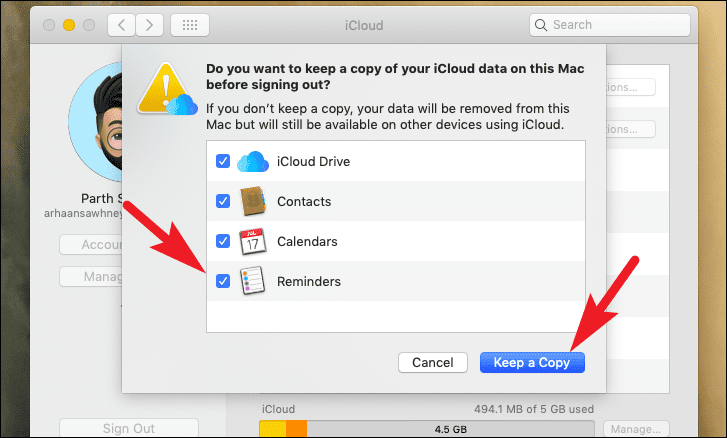
So that’s about it, you can sign out, turn off, or even log out of your Mac device as per your preference using the instructions mentioned above.


